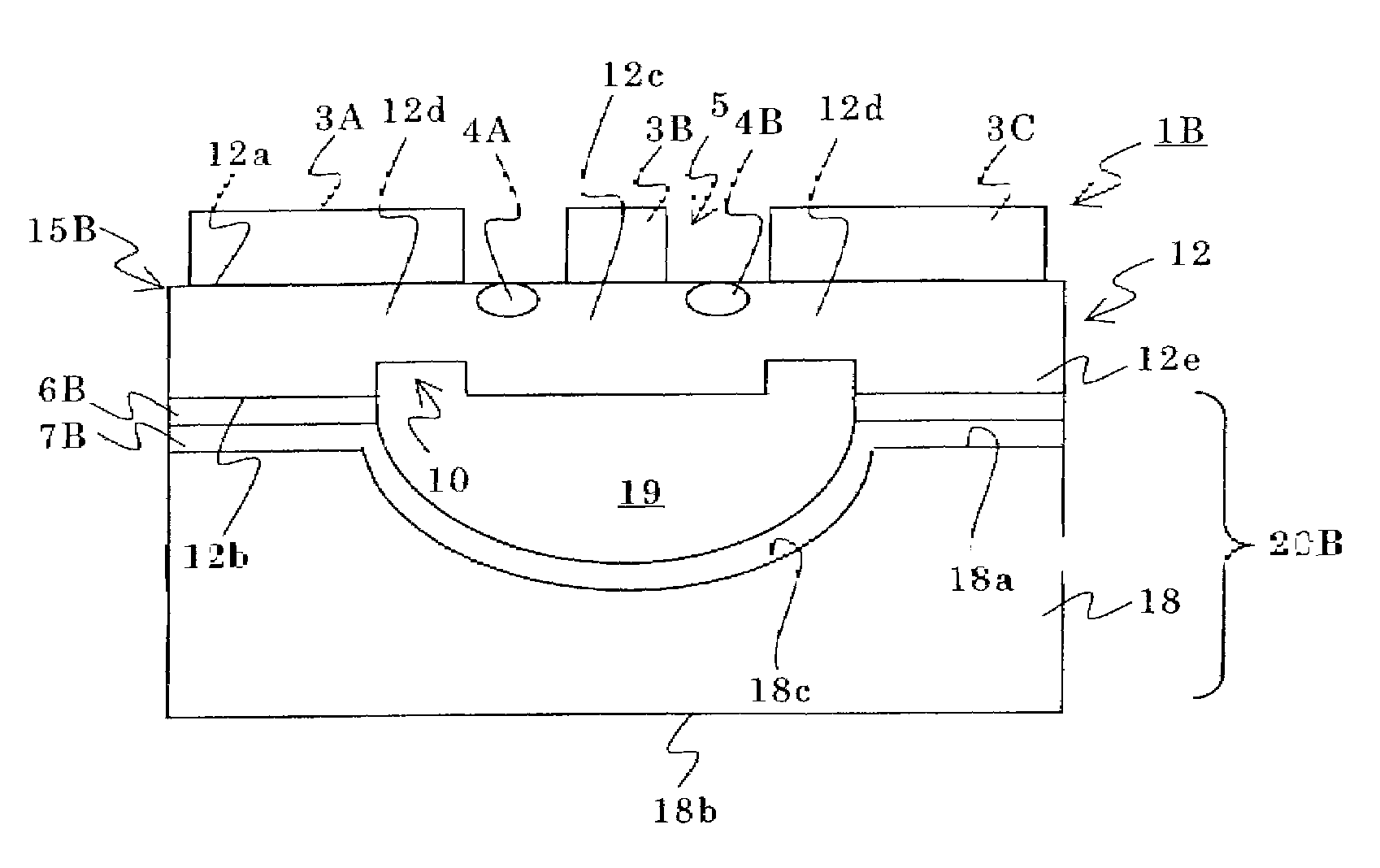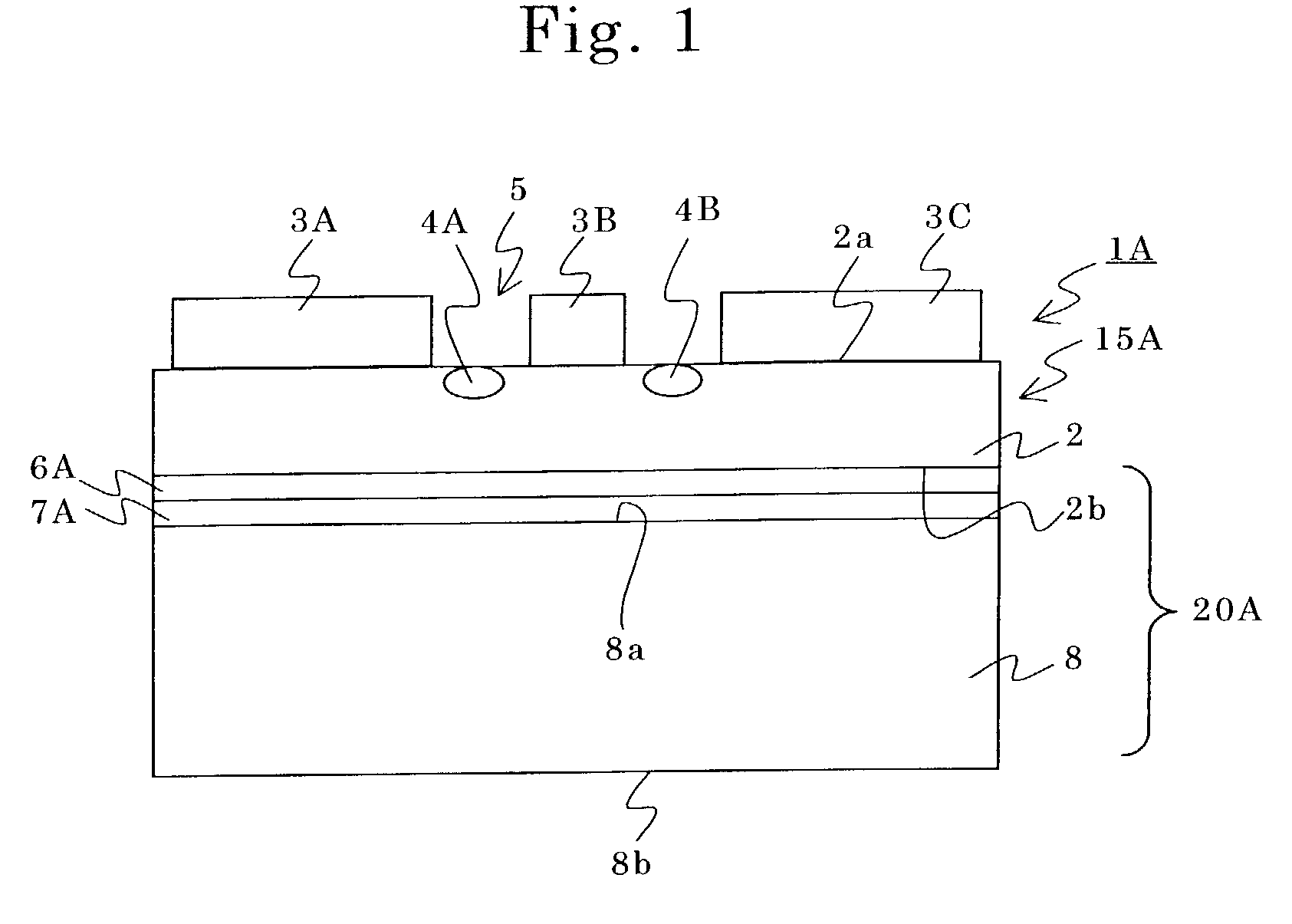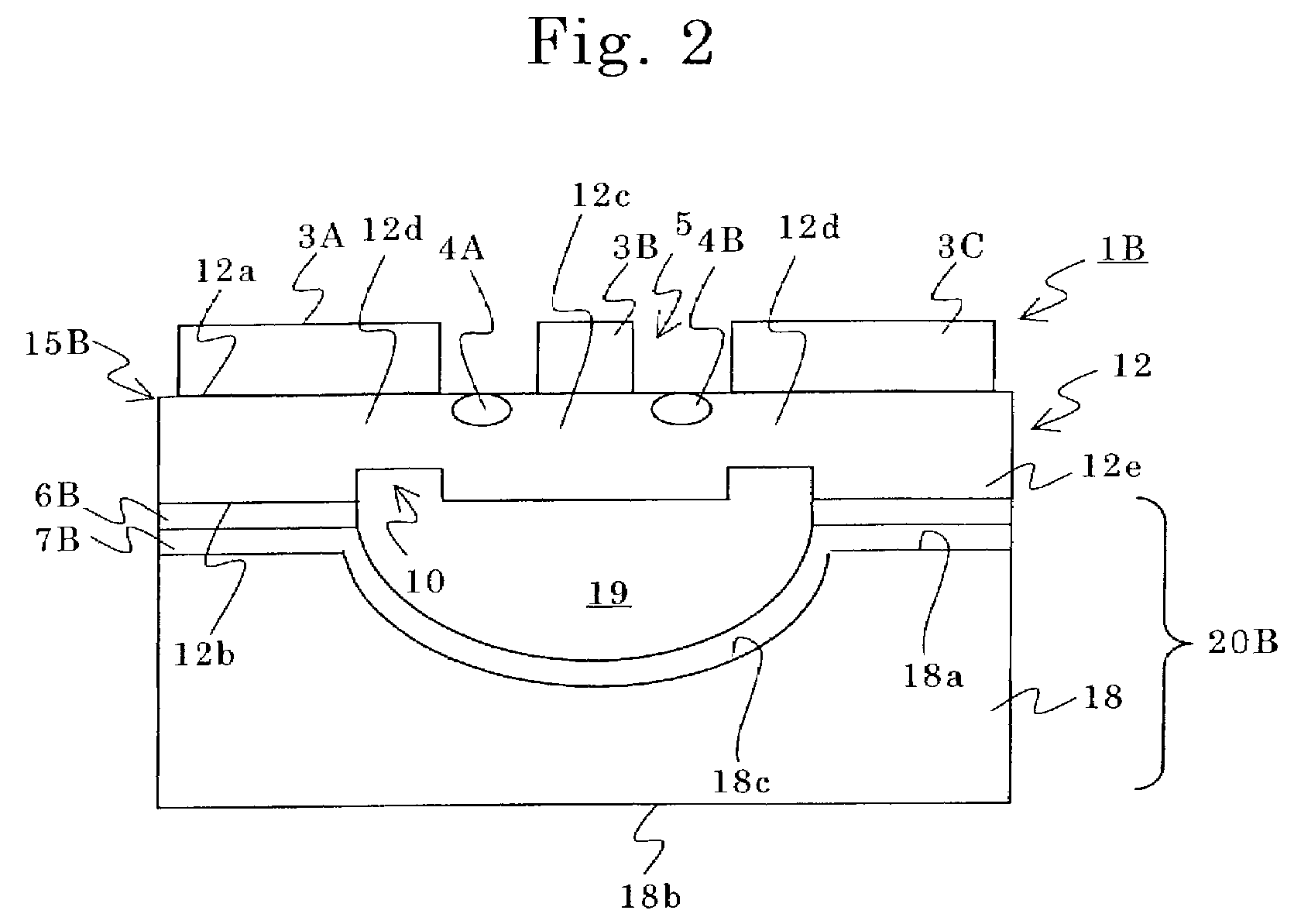Optical waveguide device, an optical modulator, a mounting structure for an optical waveguide device and a supporting member for an optical waveguide substrate
a technology of optical waveguide and mounting structure, applied in the direction of optical waveguide light guide, optical waveguide, optics, etc., can solve the problem of microwave transmission loss, and achieve the effect of reducing rippl
- Summary
- Abstract
- Description
- Claims
- Application Information
AI Technical Summary
Benefits of technology
Problems solved by technology
Method used
Image
Examples
example 1
[0092](Example 1)
[0093]An optical modulator 1A shown in FIG. 1 was produced. In detail, an X-cut 3 inch wafer (made of LiNbO3 single crystal) was used as a substrate. Optical waveguides 4A, 4B of Mach-Zehnder type were formed in the surface area of the wafer by titanium diffusion and photolithography. The size of the optical waveguide may be set at, for example, 10 μm at 1 / e2. CPW electrodes 3A, 3B and 3C were formed by electroplating. The electrode gaps of the central signal electrode 3B and ground electrodes 3A, 3C were 40 μm, the thickness of each electrode was 30 μm, and the length of the electrode was 40 μm.
[0094]A dummy wafer for grinding was then fixed on a grinding surface plate, and the main body (wafer) for a modulator was adhered onto the dummy wafer with the main face (with the electrodes) facing the dummy wafer. The main body (wafer) 2 for a modulator was then subjected to horizontal grinding, lapping and polishing (CMP) so as to machine the main body 2 to a thickness o...
example 2
[0097](Example 2)
[0098]An optical modulator 1B shown in FIG. 2 was produced. Ti diffusion optical waveguides and CPW electrodes were formed on an X-cut wafer of lithium niobate, as described in the example 1. The shapes and dimensions of the electrodes were the same as those in the example 1. A dummy wafer for grinding was then fixed on a grinding surface plate, and a main body (wafer) for a modulator was adhered onto the dummy wafer with the main face with the electrodes facing the dummy wafer. The main body (wafer) 2 for a modulator was then subjected to horizontal grinding, lapping and polishing (CMP) so as to machine the main body 2 to a thickness of 15 μm. The main body was then worked with an excimer laser at a region near the ground electrodes to a thickness of 10 μm to form a recess 10.
[0099]A space 19 with a width of 0.3 mm and a depth of 0.1 mm was formed in a supporting body 18. A conductive layer 7B of Au with a thickness of 1 μm was then formed on the opposing faces 18a...
example 3
[0102](Example 3)
[0103]An optical modulator 1C shown in FIG. 3 was produced. The optical waveguide substrate 15C was produced according to the same process as described in the example 2. A conductive layer 7A made of gold with a thickness of 1 μm was formed on the surface of a plate-shaped supporting body 8. A main body for an optical modulator was adhered and fixed onto the supporting body 8, using a film-shaped epoxy resin with a thickness of 100 μm, to produce a wafer having optical modulators 1C. The resulting wafer was then cut with a dicing machine to obtain chips. Each chip 1C had a width of 4.4 μm and a total thickness of 1 mm.
[0104]The S21 property measured was the same as example 1. A ripple was not observed within a frequency range measured.
PUM
| Property | Measurement | Unit |
|---|---|---|
| thickness | aaaaa | aaaaa |
| thickness | aaaaa | aaaaa |
| frequency | aaaaa | aaaaa |
Abstract
Description
Claims
Application Information
 Login to View More
Login to View More - R&D
- Intellectual Property
- Life Sciences
- Materials
- Tech Scout
- Unparalleled Data Quality
- Higher Quality Content
- 60% Fewer Hallucinations
Browse by: Latest US Patents, China's latest patents, Technical Efficacy Thesaurus, Application Domain, Technology Topic, Popular Technical Reports.
© 2025 PatSnap. All rights reserved.Legal|Privacy policy|Modern Slavery Act Transparency Statement|Sitemap|About US| Contact US: help@patsnap.com



